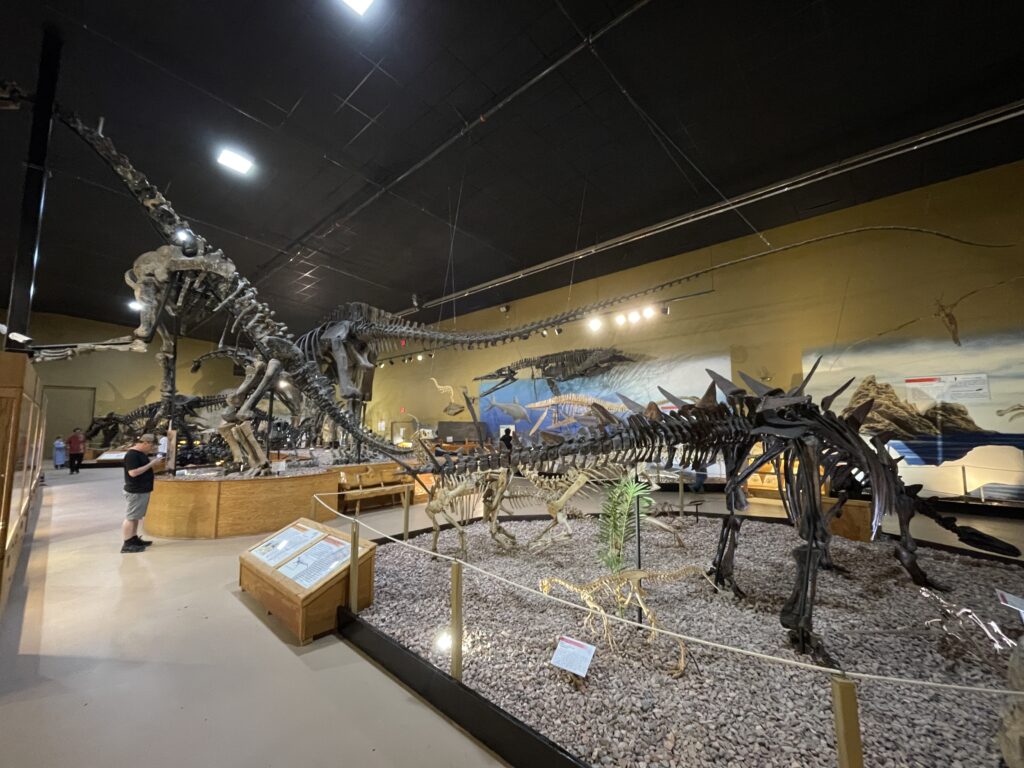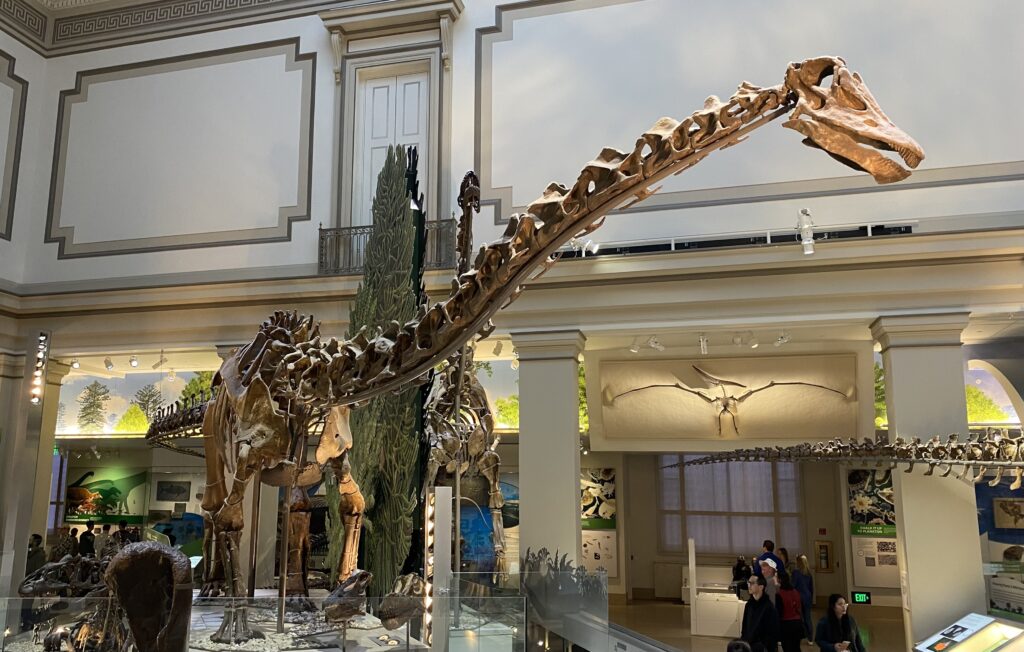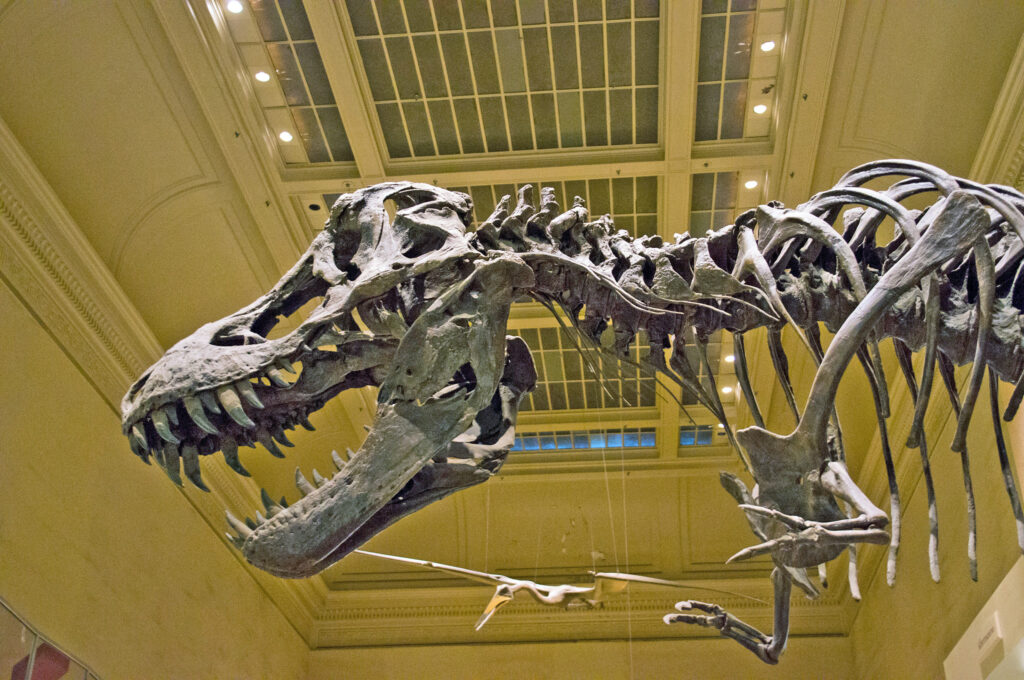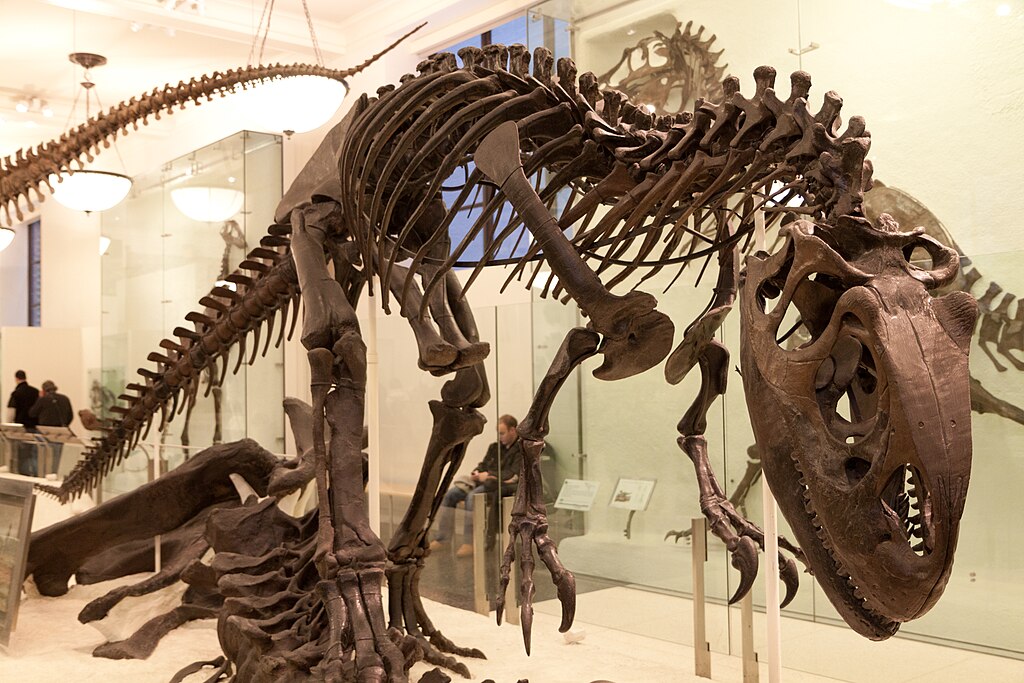The allure of dinosaurs transcends generations, captivating both children and adults with their prehistoric majesty. While museums worldwide showcase impressive fossil displays behind glass barriers, there exist special venues where visitors can experience a more intimate connection with these ancient creatures. The opportunity to physically touch authentic dinosaur remains—fossils that have survived millions of years—offers an extraordinary bridge between our modern world and Earth’s distant past. This tangible connection to prehistoric life provides not just scientific education but also a profound sense of our planet’s evolutionary journey. The following five destinations stand out for offering hands-on experiences with genuine dinosaur fossils, allowing visitors to reach across time and touch history.
The Museum of the Rockies in Bozeman, Montana

The Museum of the Rockies houses one of the largest collections of dinosaur fossils in the United States, with particular emphasis on specimens found in Montana. Under the guidance of renowned paleontologist Jack Horner (the inspiration for the character in Jurassic Park), this museum features a dedicated touch lab where visitors can handle authentic dinosaur bones. The specimens available for touching include Tyrannosaurus rex bone fragments, Triceratops vertebrae, and various fossilized teeth. Museum educators are stationed at these exhibits to explain the fossils’ origins and significance while ensuring proper handling techniques. The experience of feeling the texture and density of actual T. rex remains creates an incomparable connection to these creatures that ruled Earth 65 million years ago.
The Wyoming Dinosaur Center in Thermopolis, Wyoming

The Wyoming Dinosaur Center offers an exceptional immersive experience through its “Dig for a Day” program, where visitors can participate in actual paleontological excavations. Located near one of the richest dinosaur fossil sites in North America, participants often uncover authentic dinosaur remains from the Jurassic Period. Beyond the dig sites, the center maintains a dedicated touch area within its museum where visitors can handle various fossils, including dinosaur bone fragments, fossilized skin impressions, and coprolites (fossilized dinosaur dung). What makes this center unique is its combination of active research, education, and hands-on experiences—scientists frequently work alongside visitors, creating a dynamic learning environment. The center proudly displays specimens from over thirty different dinosaur species, many discovered within walking distance of the facility.
The Royal Tyrrell Museum in Drumheller, Alberta, Canada

Nestled in the heart of Canada’s Badlands, the Royal Tyrrell Museum stands as one of the world’s premier paleontological institutions. Its Discovery Room features several stations where visitors can handle genuine dinosaur bones, including hadrosaur (duck-billed dinosaur) vertebrae and limb fragments. The museum’s collection comes largely from the surrounding Alberta badlands, an area remarkably rich in Late Cretaceous fossils dating to approximately 75 million years ago. Museum staff offer regular “fossil touch talks” where they present additional specimens not normally available for public handling. The tactile experience is complemented by extensive exhibits explaining the geological processes that preserved these ancient remains and the techniques scientists use to study them.
The Natural History Museum in London, England

London’s Natural History Museum, housed in a magnificent Victorian building, offers visitors the chance to touch authentic dinosaur fossils at its “Investigate Centre.” This specially designed learning space features drawers filled with fossil specimens that visitors can freely examine under supervision. Among these treasures are dinosaur bone fragments, fossilized dinosaur eggs, and coprolites. The museum’s collection spans specimens from multiple continents, providing insight into dinosaur diversity across the ancient world. Particularly noteworthy is the opportunity to touch fossils from some of the earliest dinosaur discoveries—specimens collected during the Victorian era when paleontology was just emerging as a scientific discipline. The contrast between the museum’s grand architecture and these ancient remains creates a powerful reminder of humanity’s brief existence compared to Earth’s long history.
The Field Museum in Chicago, Illinois

Home to Sue, the most complete Tyrannosaurus rex skeleton ever discovered, Chicago’s Field Museum extends its dinosaur experience beyond visual displays. The museum’s Crown Family PlayLab includes a dedicated paleontology section where children and adults alike can handle genuine dinosaur fossils. Available specimens typically include fragments of Apatosaurus bones, dinosaur teeth, and occasionally pieces of fossilized dinosaur skin impressions. The museum takes special care to create context for these tactile experiences, with guided explanations about the fossilization process and what these physical characteristics reveal about dinosaur biology. During special events, the museum sometimes brings out additional specimens from its vast collection, giving regular visitors new opportunities for hands-on engagement with different fossil types.
Understanding Fossil Preservation

When touching dinosaur fossils at these venues, visitors are handling rocks that have formed through a complex preservation process. True fossils aren’t the original bone material but rather minerals that have replaced organic matter through permineralization over millions of years. This transformation begins when a dinosaur dies and is quickly buried in sediment, which prevents decomposition and scavenging. Groundwater carrying dissolved minerals then infiltrates the bone structure, replacing the original cells with minerals like silica, calcite, or pyrite. The resulting fossil retains the microscopic structure of the original bone while becoming significantly heavier and more durable. This explains why dinosaur fossils can feel surprisingly stone-like to the touch—they are, in essence, stone replicas of the original bones with the same shape and structure.
The Ethics of Touching Fossils

The institutions that allow fossil touching carefully balance scientific preservation with educational access. Typically, specimens designated for public handling are either abundant fossil types, fragments that don’t have significant research value, or casts of more important specimens. Museum curators select fossils for touching exhibits based on their durability, replaceability, and educational value. Oils and acids from human hands can potentially damage some types of fossils, so museums often rotate specimens or apply protective consolidants to prevent degradation. Visitors are typically instructed to handle fossils with clean, dry hands and to avoid wearing hand lotions or sanitizers that might contain damaging chemicals. This careful approach ensures that future generations can continue to experience direct contact with these ancient remains while preserving the scientific integrity of important specimens.
Educational Value of Tactile Experiences

Research in museum education consistently demonstrates that tactile experiences create stronger neural connections and more lasting memories than visual observation alone. When visitors touch actual dinosaur fossils, they engage multiple sensory pathways that enhance learning and retention of information. The weight, texture, and temperature of fossils provide data points that can’t be fully conveyed through visual displays or replicas. For children, especially, this multisensory experience can spark a deeper interest in paleontology and natural history. Museum educators report that visitors who participate in fossil-touching exhibits ask more sophisticated questions and demonstrate better comprehension of concepts like fossilization, geological time, and extinct ecosystems. This hands-on approach transforms abstract concepts about prehistoric life into a tangible reality, making the distant past immediately relevant.
Planning Your Visit

When organizing a trip to touch dinosaur fossils, some planning can significantly enhance the experience. Many museums offer fossil touching opportunities only during specific hours or as part of scheduled programs rather than continuous access. Checking museum websites or calling ahead can prevent disappointment and help you time your visit for optimal experiences. Some institutions require additional tickets or reservations for special hands-on programs, particularly those involving active fossil digs. Visiting during weekdays or non-peak seasons typically means smaller crowds and more individualized attention from museum educators. Photography policies also vary—while most museums allow photography of the fossils you touch, some restrict flash photography or have specific guidelines worth knowing in advance.
Beyond Bones: Other Touchable Dinosaur Remains

Beyond bones, some institutions offer opportunities to touch other fascinating types of dinosaur fossils. Fossilized dinosaur eggs, though rare, occasionally appear in touch exhibits, providing insight into dinosaur reproductive biology. Trackways—preserved footprints left in ancient mud—sometimes include touchable sections where visitors can feel the impression left by a dinosaur that walked the Earth millions of years ago. Coprolites (fossilized feces) may seem less appealing but offer valuable information about dinosaur diets and are frequently included in touch exhibits. Some museums even feature touchable examples of gastroliths—polished stones that resided in dinosaur stomachs to help grind food. These diverse fossil types provide a more complete picture of dinosaur lives beyond their skeletal remains.
Digital Alternatives and Accessibility

For those unable to visit these locations in person, evolving technologies are creating alternative ways to experience dinosaur fossils. Several institutions now offer virtual touch experiences using haptic feedback technology, allowing remote users to “feel” digitized fossils through special interfaces. 3D printing has enabled the creation of highly accurate replicas that can be touched freely without concern for damaging irreplaceable specimens. Some museums loan teaching collections of real fossils to schools and community centers, expanding access beyond their physical buildings. These innovations are particularly valuable for individuals with mobility limitations or those living far from major paleontological collections. While these alternatives can’t fully replace the experience of touching authentic fossils, they represent significant advances in making paleontological experiences more widely accessible.
Connecting with Our Ancient Past

The psychological impact of touching something that existed during the Mesozoic Era creates a profound connection across vast periods. Many visitors report feeling a sense of awe when realizing their hand is touching something that was once part of a living creature from an Earth drastically different from our own. This tangible link to the past helps contextualize human existence within the broader timeline of our planet. Paleontologists often describe this sensation as a catalyst for their career paths—many trace their professional interest in dinosaurs to early childhood experiences of touching real fossils. This emotional response to fossil touching transcends mere scientific interest, creating a deeply personal connection to Earth’s history that can inspire conservation ethics and appreciation for evolutionary processes.
Conclusion: Bridging 65 Million Years

The opportunity to physically touch dinosaur fossils represents a remarkable bridge across time, connecting modern humans with creatures that dominated Earth for over 160 million years. These five destinations—and others like them around the world—offer more than just scientific education; they provide a tangible connection to deep time that can transform our understanding of our planet’s history. As you run your fingers across the fossilized remains of a Triceratops or Tyrannosaurus rex, you’re experiencing a direct physical connection to the Mesozoic world, feeling the same material that once supported these magnificent creatures. In an age of digital experiences and virtual reality, these authentic tactile encounters with the distant past remain uniquely powerful, reminding us of our brief moment in Earth’s long and fascinating evolutionary journey.




